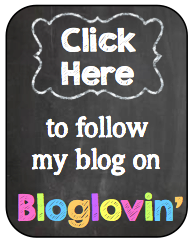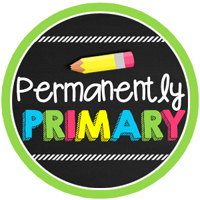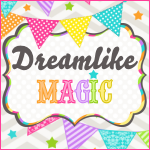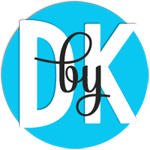The basic format of running my math stations is this:
- Our math block is approximately 50 minutes long.
- There are 4 rotations: Meeting with me for a small-group lesson, iPads, Fact Practice, and Book & Math Bags
- I meet with each group for 10 minutes to do a quick lesson from My Math (our McGraw Hill program).
- I have approximately 1 minute transitions for them to switch stations.
- Everything is run by music.
- There are a maximum of 7 students in a group (it used to be 6, but then a month ago I gained #25...so that means one group had to have 7). I ability group them so that I'm able to differentiate a little easier.
Here are some basics for management purposes:
I made a simple flipchart for my Promethean Board. It has the 4 stations within each rotation. It is projected on the board for easy student viewing. I simply click the mouse to change it every 10 minutes.
Our whole 50ish minutes are set to music. I put together a playlist on iTunes. I have approximately 10 minutes of classical music followed by 1 minute of more upbeat songs that let the students know we are transitioning. I use 2 Heidi Songs that total about 1 minute (I bought the ones I need off of iTunes). This repeats itself 3 more times so that I have a total of 4 classical segments, which is "work time". During the transitional music, the students know it's time to switch and have time to clean up real quick and start their next station.
All of their materials for the "Math Bags" and "Fact Practice" are stored in my rainbow drawer cart. Each drawer is labeled so they can easily find the things they need.
The first station is working with the teacher.
I work with my low group first so that they have the basis to do their following stations independently. I have my manual, manipulatives, and all other supplies right at my table so that I'm ready to teach. I found this handy plastic tub and tiny little ones at The Container Store a little over a year ago. Everything fits perfectly and I keep it right under my desk.
I go through the intro to the lesson and then we work through several examples and problems in their books together. I also use this time to differentiate. I'm able to slow it down for my low group and do some extension activities and problems with my high group.
The second station is "Book & Math Bags".
After they work with me, they move right into their independent practice page. On one of the walls in my classroom, I have a ripped off cover from one of their math books and taped it to the wall and put a piece of chalkboard vinyl underneath. I use chalk markers to write the page number that they are to work on in their book. I have a helper erase it at the end of each day and I just write the new one up there every morning. They just have to look at the wall, find the book cover, and see what page they need to do that day. It eliminates questions of what page to turn to.
If they have time once they are finished (which they usually do), they go over to the rainbow drawers and grab a math activity. I have several bags of Common Core centers in a drawer and they can pick one to work on. They have the directions and parts and pieces in each bag. Everything is there and they just have to grab it and get busy! These centers are in my store. I have sets for each month.
The third station is Fact Fluency.
I have many options for them to practice their math facts. Once again, everything is stored in the rainbow drawers. They can choose from Hot Dots, Wrap Ups, Board Games, Roll and Cover, or fact practice on the iPads (more on that in a minute).
The board games (Addition and Subtraction Races) come from Jana Guerra from We Heart 1st. My students love them and they were super easy to prep!
You can find the Addition Roll and Cover games in my shop. Just print, laminate, and add some dice and playing pieces! Super easy to prep as well. The students love playing it and it really has made a difference in their ability to quickly recall facts.
The fourth station is iPads.
We use a free app called FrontRow. It's a differentiated, self-paced program that works on all math domains. The students are given a pretest in each domain and then it starts them where they are and progresses as they're ready. The data end of it for teachers is awesome. This year they added a "Fact Practice" section where the students can play a game to practice their math facts. The students can work on this during fact practice if they want as well. If you don't have iPads, don't worry - it's available for desktop/laptop computers as well!
The way math rotations are done in my classroom are super-easy to manage and very low prep. It took a little leg work up front (printing, laminating, and sometimes cutting) to get some of the math bags, Roll and Cover, and board games ready to go, but now it takes no time at all to prep for math.
Here is a view of my plans in PlanBook for how I do my lesson plans for my math block. I saved the template and tweak it each week to reflect the different lessons. You should be able to click on it to make it bigger. :)
I hope this post has given you some inspiration to start or help you organize your math stations! We do this every day and my students and I all love it. :)






































